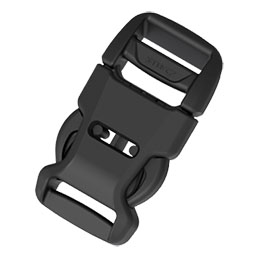
The choice between nylon and acetal for buckles depends on the specific application requirements and the desired properties of the buckle. Both materials have their advantages and disadvantages.
Nylon is a strong and durable material that can withstand a wide range of temperatures and resist wear and tear. It is also relatively lightweight and can be molded into complex shapes. Nylon buckles are commonly used in applications that require strength and durability, such as outdoor gear, luggage, and sports equipment.
Acetal, also known as polyoxymethylene (POM), is a thermoplastic material that is known for its high stiffness, strength, and toughness. It is resistant to chemicals and abrasion, and it can maintain its properties over a wide range of temperatures. Acetal buckles are commonly used in applications that require high strength and stiffness, such as automotive and industrial applications.
In general, if the application requires a high strength and stiffness buckle that can withstand harsh chemicals and temperatures, acetal may be the better choice. If the application requires a lightweight and durable buckle that can withstand wear and tear, nylon may be the better choice. Ultimately, the specific application requirements and the desired properties of the buckle will determine which material is the best choice.
April 3, 2023 | View: 771 | By: <a class="mp-info" href="https://www.contactleft.co.uk/blog/author/contact-left.html">contact-left</a>
